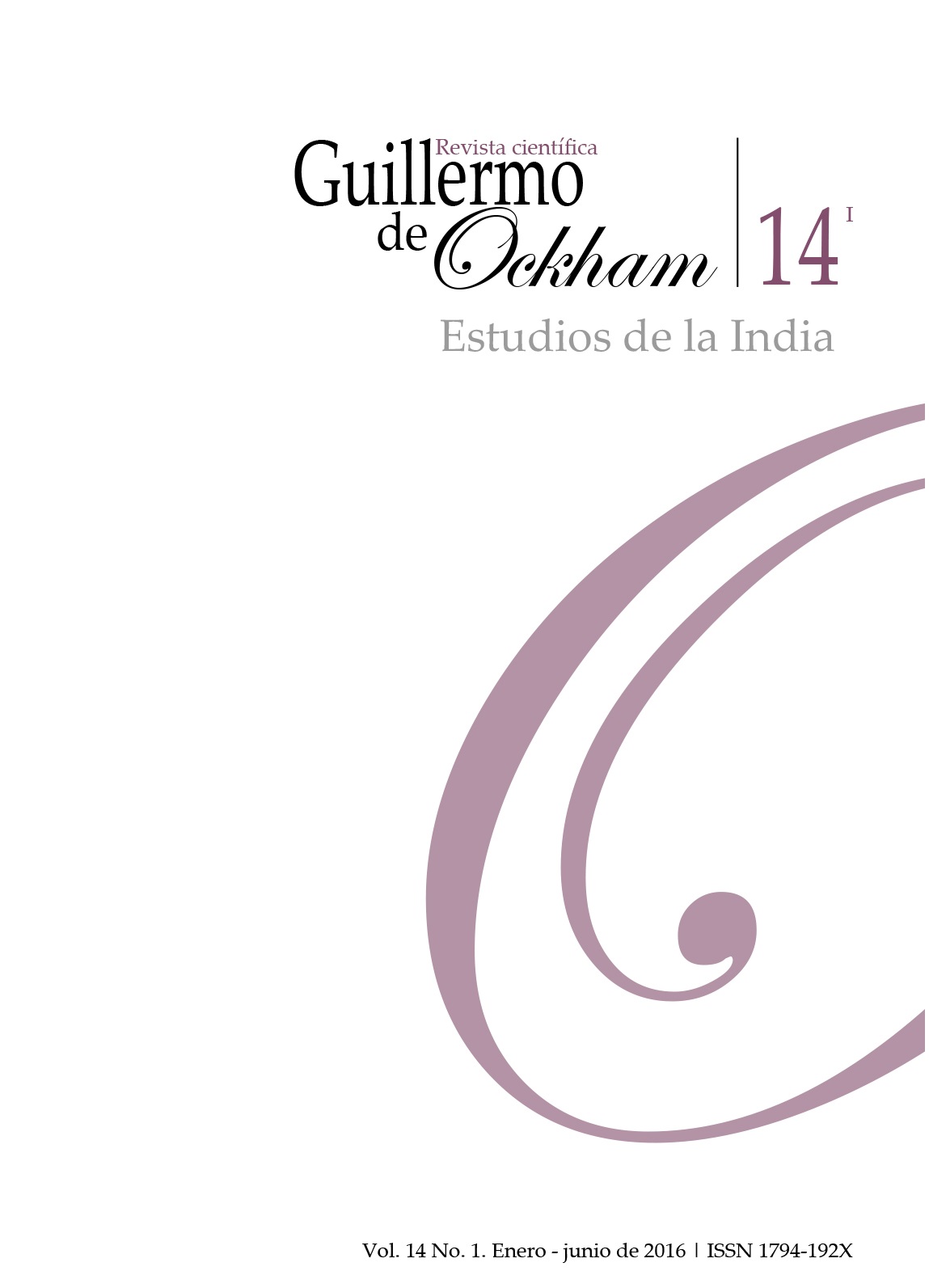The Revista Guillermo de Ockham provides an immediate and open access to its content, based on the principle of offering the public a free access to investigations to provide a global interchange of knowledge.
Unless otherwise established, the contents of this journal has a license with Creative Commons Attribution-NonCommercial-NoDerivatives 4.0 International (CC BY-NC-ND 4.0) http://creativecommons.org/licenses/by-nc-nd/4.0/
- Attribution: You must give appropriate credit, provide a link to the license, and indicate if changes were made. You may do so in any reasonable manner, but not in any way that suggests the licensor endorses you or your use.
- NonCommercial: You may not use the material for commercial purposes.
- NoDerivatives: If you remix, transform, or build upon the material, you may not distribute the modified material.
- No additional restrictions: You may not apply legal terms or technological measures that legally restrict others from doing anything the license permits.
Abstract
En este trabajo reflexionaremos sobre algunos problemas que surgen al intentar responder la pregunta qué es el sánscrito, en general, y a qué se llama sánscrito clásico, en particular. Partiendo de una serie de diferenciaciones, no exentas de problemas y de contradicciones, que suelen hacer los especialistas en el tema, nos ocuparemos de puntualizar cuatro caracterizaciones diferentes, aunque relacionadas, que subyacen bajo el uso que hacemos del término “sánscrito”: (a) en tanto lengua clásica, (b) en tanto una variedad lingüística natural, (c) en tanto lengua en la que está compuesto el canon literario de la India antigua y (d) en tanto lengua artificial. Los problemas y limitaciones de los distintos criterios involucrados en cada una de estas caracterizaciones nos llevarán a algunas reflexiones finales sobre las particularidades de la lengua sánscrita, los desafíos que entraña su enseñanza y las posibles líneas de investigación que deben ser profundizadas.
References
Berenguer-Amenós, J. (1999). Gramática griega. Barcelona: Bosch.
Burrow, T. (2001). The Sanskrit Language. Delhi: Motilal Banarsidass.
Cardona, G. (1987). Indo-Aryan Languages. In B. Comrie (Ed.), The Major Languages of South Asia, the Middle East and Africa (pp. 14-79). Londres: Routledge.
Cardona, G. (1988). Pāṇini. His Work and its Tradition. Delhi: Motilal Banarsidass.
Deshpande, M. (1996). The Vedic traditions and origins of grammatical thought in Ancient India. In N. Balbir, & G. J. Pinault (Eds.), Langue, style et structure dans le monde indien: Centenaire de Louis Renou. Actes du Colloque international (pp. 145-169). París: Librairie Honoré Champion.
Deshpande, M. (1993). Sanskrit and Prakrit. Sociolinguistics Issues. Delhi: Motilal Banarsidass.
Deshpande, M. (2001). The Vedic context of Panini’s Grammar. In H. Kniffka (Ed.), Indigenous Grammar across Cultures (pp. 33-51). Frankfurt: Peter Lang.
Hudson, R. A. (1996). Sociolinguistics. Cambridge: Cambridge University Press.
Kulikov, L. (2013). An Atharvanic hymn to night: text-critical and linguistic remarks on the interpretation of Śaunakīya 19.50 = Paippalāda 14.9*. Bulletin of SOAS, 76 (2), 259-269. doi:10.1017/S0041977X13000074.
Macdonell, A. (1916). A Vedic Grammar for Students. Oxford: Clarendon Press.
Masica, C. (1991). The Indo-Aryan languages. Cambridge: Cambridge University Press.
Mylius, K. (2015 [1983]). Historia de la literatura india antigua. Madrid: Trotta.
Oberlies, T. (2003). A grammar of Epic Sanskrit. Berlín-NY: De Gruyter.
Pollock, S. (2003). Sanskrit Literary Culture from the Inside Out. In S. Pollock (Ed.), Literary Cultures in History. Reconstructions from South Asia (pp. 39-130). Berkeley-Los Angeles: University of California Press.
Van Hall, T., & Vielle, C. (Ed.) (2013). Grammatica Grandonica. The Sanskrit Grammar of Johann Ernst Hanxleden S.J. (1681-1732). Postdam: Universitäts Verlag Potsdam.
Witzel, M. (1989). Tracing the Vedic dialects. In C. Caillat (Ed.), Dialects dans les littératures indo-aryennes (pp. 97-264). París: College de France/Institut de Civilisation Indienne.
































